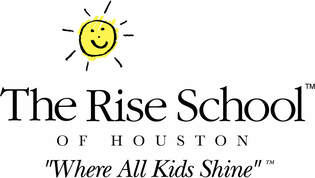Loose Parts
In early childhood education settings, loose parts mean attractive, unique, found objects and materials that children can move, manipulate, manage, and change while they play. Children can shift, combine, stack, revamp, arrange, take apart, and put loose parts back together in endless ways. The materials come with no specific set of directions, and they can be used alone or combined with other materials. Children can turn them into whatever they desire: a block can become a character in a story; a branch can become an ingredient in an imaginary soup. These objects invite language and social interactions, and they encourage collaboration and cooperation. Put another way, loose parts promote social competence because they support creativity and novelty. All of these are highly valued skills in adult life today.
Rise uses “Loose Parts” as a complement to the 3Ls program. Loose Parts supports imagination and problem-solving while teaching and reinforcing basic literacy skills. Rise’s teachers recognize the tremendous value in a multisensory approach in teaching early literacy and the importance of play. Loose Parts encourages symbolic play, creativity, problem-solving, storytelling, sequencing, and other skills vital to early literacy. Loose Parts play is an effective way to encourage storytelling, reading, and writing.
As part of Loose Parts, age-appropriate books are chosen for each classroom that can relate to loose parts. For example, “The Robot Book” would be paired with loose parts such as plastic nuts and bolts, napkin rings, cardboard, and plastic tubing. The teacher will read the book to the class and then let them play and create with the loose parts using verbal prompts and open-ended questions to encourage comprehension and higher-order thinking.
Rise uses “Loose Parts” as a complement to the 3Ls program. Loose Parts supports imagination and problem-solving while teaching and reinforcing basic literacy skills. Rise’s teachers recognize the tremendous value in a multisensory approach in teaching early literacy and the importance of play. Loose Parts encourages symbolic play, creativity, problem-solving, storytelling, sequencing, and other skills vital to early literacy. Loose Parts play is an effective way to encourage storytelling, reading, and writing.
As part of Loose Parts, age-appropriate books are chosen for each classroom that can relate to loose parts. For example, “The Robot Book” would be paired with loose parts such as plastic nuts and bolts, napkin rings, cardboard, and plastic tubing. The teacher will read the book to the class and then let them play and create with the loose parts using verbal prompts and open-ended questions to encourage comprehension and higher-order thinking.
|
|
The Rise School of Houston is a not-for-profit 501(c)(3) charitable organization.


